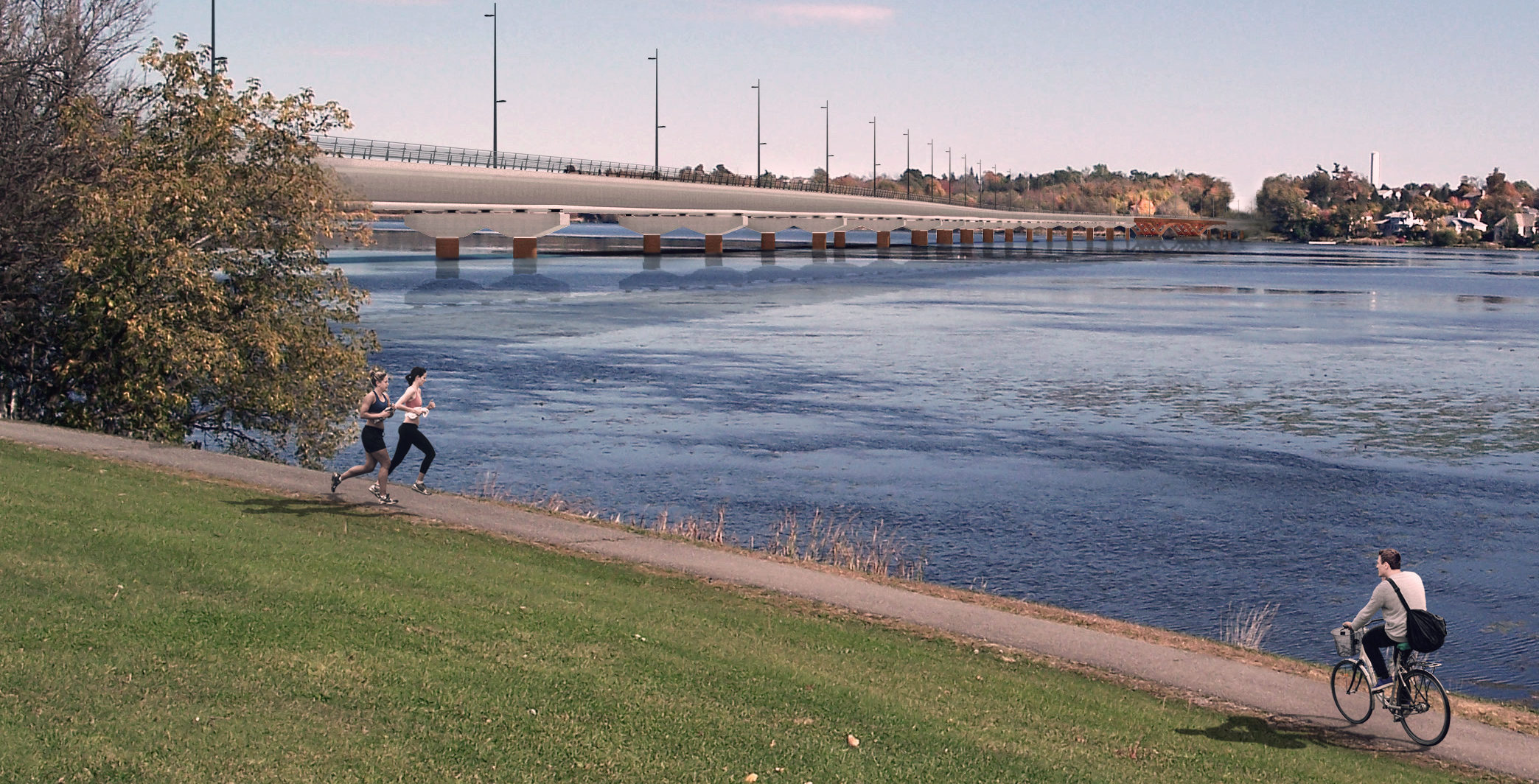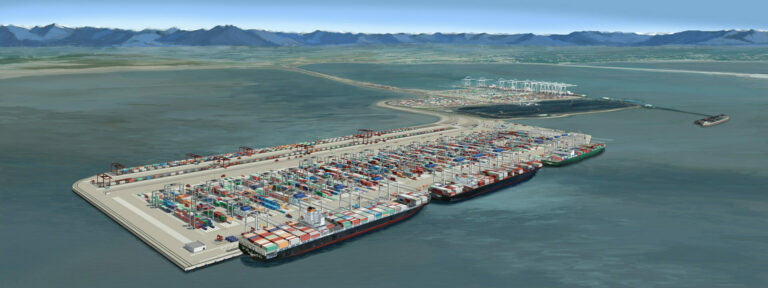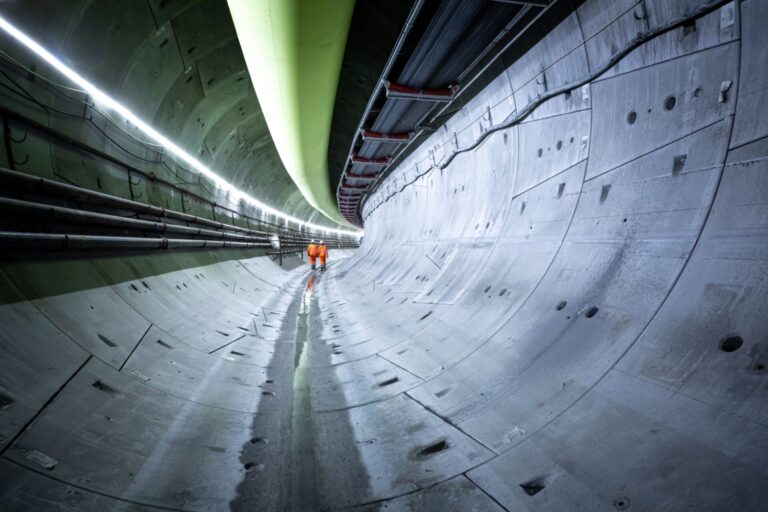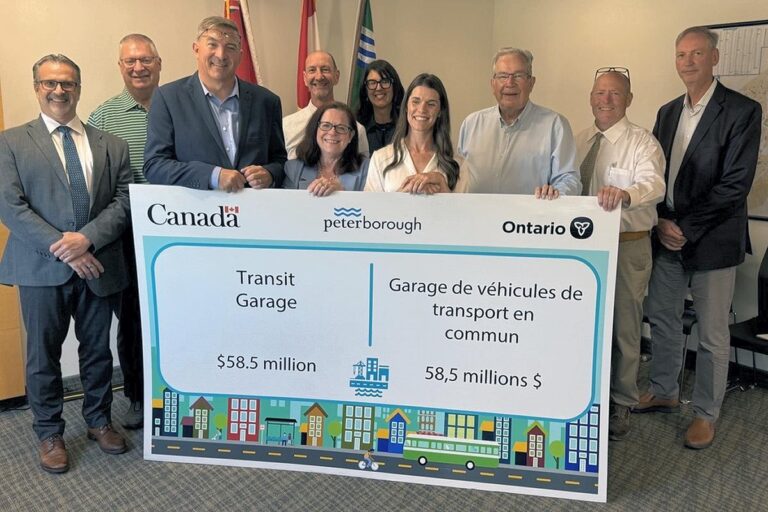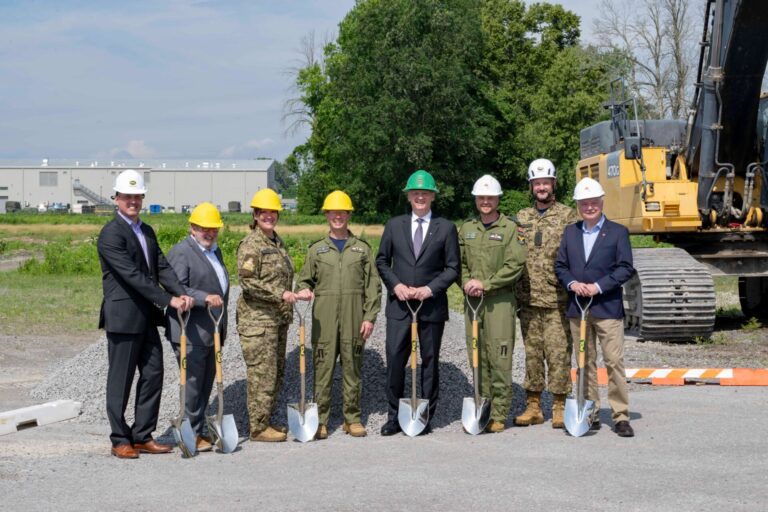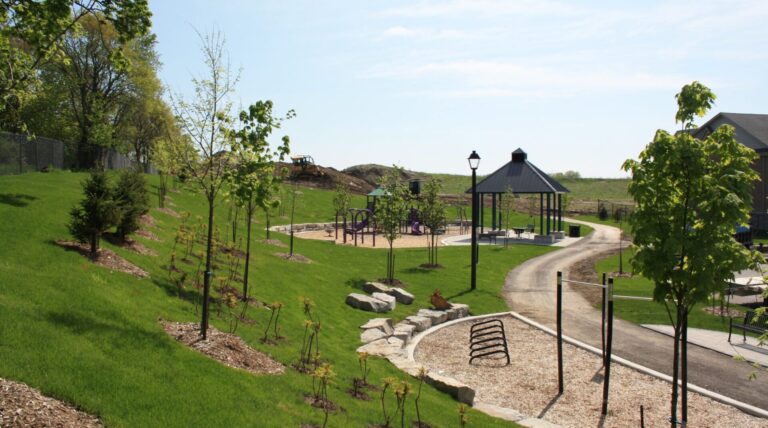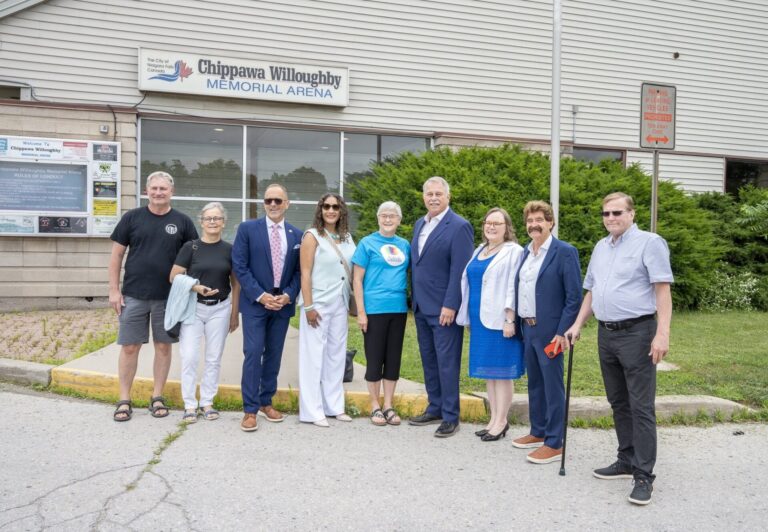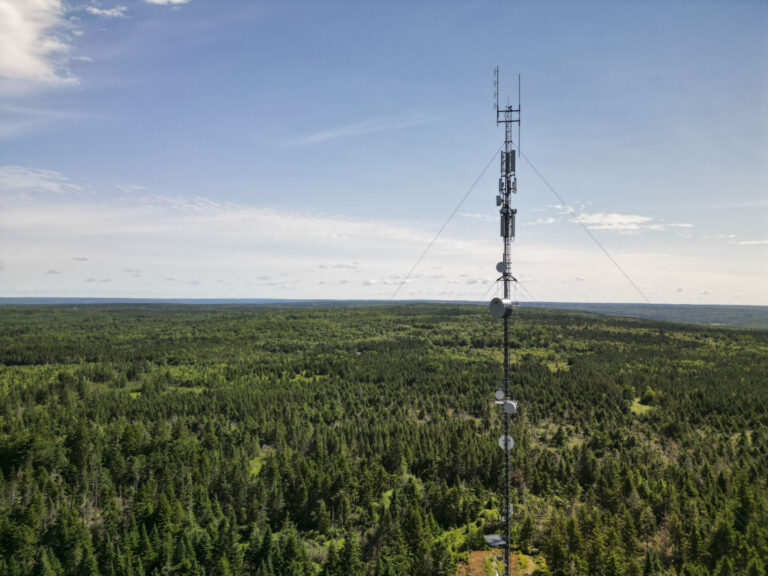Another milestone has been marked for the historic Third Crossing project in Kingston, Ontario with the delivery of the first of 95 150-foot long concrete girders. Once installed, these girders will support the bridge deck and span pier-to-pier.
“We’re excited for this next phase of construction where residents will now start to see more work happening above the water,” says Mark Van Buren, Deputy Commissioner Major Projects Office. “The team has prepared extensively for the safe arrival and installation of these impressive pieces of infrastructure; however, this is still a first for the City. We’re asking the public for their patience as we help them arrive safely into the community with minimal traffic disruption.”
At 150 feet in length, these girders are some of the largest ever made for a bridge in Ontario. Girders will continue to come through Kingston over the next few months. Placement of the girders will begin near the west shore and continue east towards the steel main span throughout 2021. Due to the size and weight of each girder there is a comprehensive transportation plan laid out for each one that is guided by a permit from the Ontario Ministry of Transportation.
The Third Crossing bridge will connect across the Cataraqui River from the foot of Gore Road in the city’s east-end to the foot of John Counter Boulevard in its north end. The bridge is the largest infrastructure project the City of Kingston has ever undertaken and is being funded by all three levels of government – each contributing $60 million.
The project team for the $180 million bridge is a consortium made up of Peter Kiewit Sons ULC, Hatch Ltd., and Systra International Bridge Technologies. An integrated project delivery model is being used, a successor to the traditional design-build model.
The new 1.2 kilometre, two-lane bridge will improve emergency services, increase active transportation through a multi-use pedestrian and bike pathway, create greater business connectivity and enhance the quality of life for the residents and visitors of Kingston.
The environmental assessment found benefits of a bridge would be the following:
- Decrease traffic congestion along the Lasalle Causeway
- Provide additional access to the east end of the city for emergency vehicles and City services
- Provide an alternative route during Lasalle Causeway closures
- Provide an opportunity for active transportation with a multi-use trail
- Accommodate future growth
- Enhance the Rideau Canal
There are four phases of the city’s Action Plan for the project:
- Phase One– 2009 to 2013 – Environmental Assessment – Completed
- Phases Two and Three– January 2016 to June 2017 – Preliminary Design and Business Case Completed
- Phase Four– February 2018 to ongoing – Detailed Design and Construction – Underway (2018 – 2022)
Featured image credit: Brownlie Ernst and Marks (BEaM) Limited.

